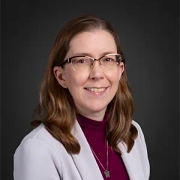- Level Foundation
- Duration 36 hours
- Course by Ball State University
-
Offered by

About
This course aims to prepare you for problem solving through programming. In this course, you’ll be introduced to the C Programming Language. You’ll learn about various constructs supported by C Language and use them to write programs which can solve scientific problems. This course covers a wide variety of topics in fundamentals of programming that are designed to give you an overview of what’s to come in the BITS Pilani BSc Computer Science degree program. By the end of the course in the degree program you will be able to write C programs to solve scientific problems, understand the high-level components of a computer and how they are interconnected to execute programs, write programs using various constructs supported by the C language such as assignment, sequencing, conditional and iteration, perform indirect memory level operations of a computer through pointers and dynamic memory allocation, create, edit and delete files on a computer using programs as well as write programs to create large records of data and implement operations such as searching, sorting etc. Here you can experience the first half of the course very similarly to how you would were you enrolled in the degree program.Modules
Module 1 Overview
2
Videos
- Welcome to the Course
- Module 1 Overview
Welcome to the Course!
1
Discussions
- Introduce Yourself
1
Videos
- Meet your Instructor
3
Readings
- About This Course
- Read the Course Syllabus
- Meet Your Course Staff
Introduction to Programming and Python
1
Assignment
- Programming Assignment 1a
7
Videos
- Why python?
- Writing Code in Jupyter Notebook
- Variables and Assignment Statements
- Arithmetic
- Live Coding: Variable Assignment and Arithmetic
- Using print() for Output and Strings
- Getting Input from the User with input()
2
Readings
- About Lectures and "Live Coding" Videos in this Course
- Supplemental Material
Decision making
1
Assignment
- Programming Assignment 1b
3
Videos
- Decision Making: the if Statement
- Live Coding: comments and if Statement Example
- Built-in Functions: min() and max()
Wrapping Up Module 1
- Module 1 Reflection Activity
2
Readings
- About Reflective Practice Assignments
- Module 1 Conclusion
Module 2 Overview
1
Videos
- Module 2 Overview
1
Readings
- Supplemental Material
Selection Statements: More Advanced Decision Making
1
Assignment
- Programming Assignment 2a
6
Videos
- Introduction, algorithms, and pseudocode
- Control statements and python keywords
- if statements and if..else statements
- if..elif..else statements
- General form for an if statement
- Live Coding: if...elif...else statement
Iteration: an introduction to for and while loops
1
Assignment
- Programming Assignment 2b
13
Videos
- while statements: example 1
- While Statements: Example 2
- Live Coding: while statement
- for statements
- for statements: example 1 - loop through letters in a word
- for statements: example 2 - loop through numbers using range()
- General form for a for loop, augmented assignment, and example 3 - use a for loop to add up numbers
- Live Coding: for statement (and nested statements)
- Examples using formatted strings
- Control statements: break and continue
- Boolean Operators: And
- Boolean Operators: Or, Not
- Live Coding: Using a For Statement to Count Upwards
Wrapping up Module 2
- Module 2 Reflection Activity
2
Videos
- Intro to Data Science: mean(), median(), and mode(), and Importing a Package
- Common Mistakes: If, For, and While
1
Readings
- Module 2 Conclusion
Module 3 Overview
1
Videos
- Module 3 Overview
1
Readings
- Supplemental Material
Introduction to Functions
- Programming Assignment 3a
10
Videos
- Introduction to Functions
- Defining a Function
- Calling a Function
- Creating a Program that Uses Functions
- Variable Scope: Local vs. Global
- Functions With Multiple Parameters
- Live Coding: A Function With No Arguments
- Live Coding: A Function With One Argument
- Live Coding: A Function With Two Arguments
- Live Coding: Two Functions in One Program
Using packages: the random and math packages
- Programming Assignment 3b
4
Videos
- Random Number Generation
- Example: Random Number Generation
- The Python Standard Library and the Math Module
- Live Coding: Using the Math Module (and Writing a Function)
Wrapping up Module 3
1
Peer Review
- Module 3 Reflection Activity, Part 2
1
Labs
- Module 3 Reflection Activity, Part 1
1
Readings
- Module 3 Conclusion
Module 4 Overview
1
Videos
- Module 4 Overview
1
Readings
- Supplemental Material
Learning more about functions
- Programming Assignment 4
8
Videos
- Review of Functions
- Methods
- Scope Rules: Local vs. Global
- A Deeper Look at Import
- Intro to Data Science: Measures of Dispersion
- Live Coding of Another Function, With Discussion of Local vs. Global Scope
- Live Coding of the Different Uses of Import, With the Math Module
- Live Coding of the Use of the Statistics Module: pvariance() and pstdev()
Wrapping up Module 4
- Module 4 Reflection Activity
1
Readings
- Module 4 Conclusion
This is the end ... but also a beginning.
2
Readings
- You did it!
- What is next?
Auto Summary
Dive into the "Introduction to Programming" course, designed for aspiring Data Science & AI professionals. Led by Coursera, this foundational course introduces you to C Programming, teaching you to solve scientific problems and understand computer operations. Spanning 2160 minutes, it covers essential topics like memory management, file handling, and data operations. Ideal for beginners, this course offers a glimpse into the BITS Pilani BSc Computer Science program. Subscribe now with the Starter option and start your programming journey.

Dr. Jennifer Coy


